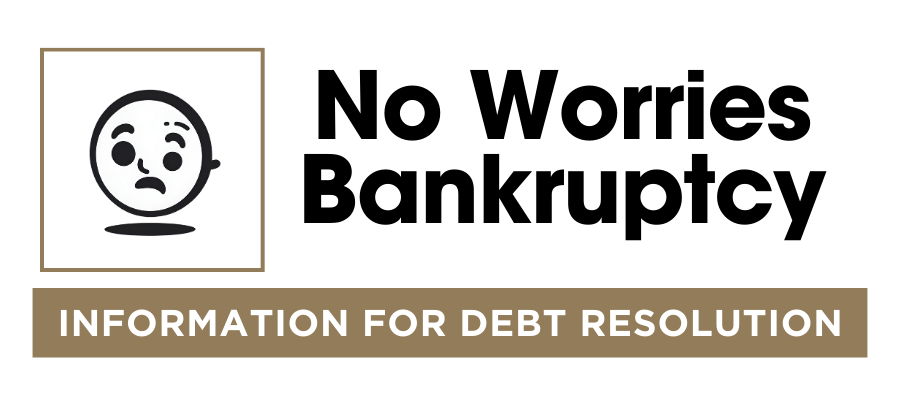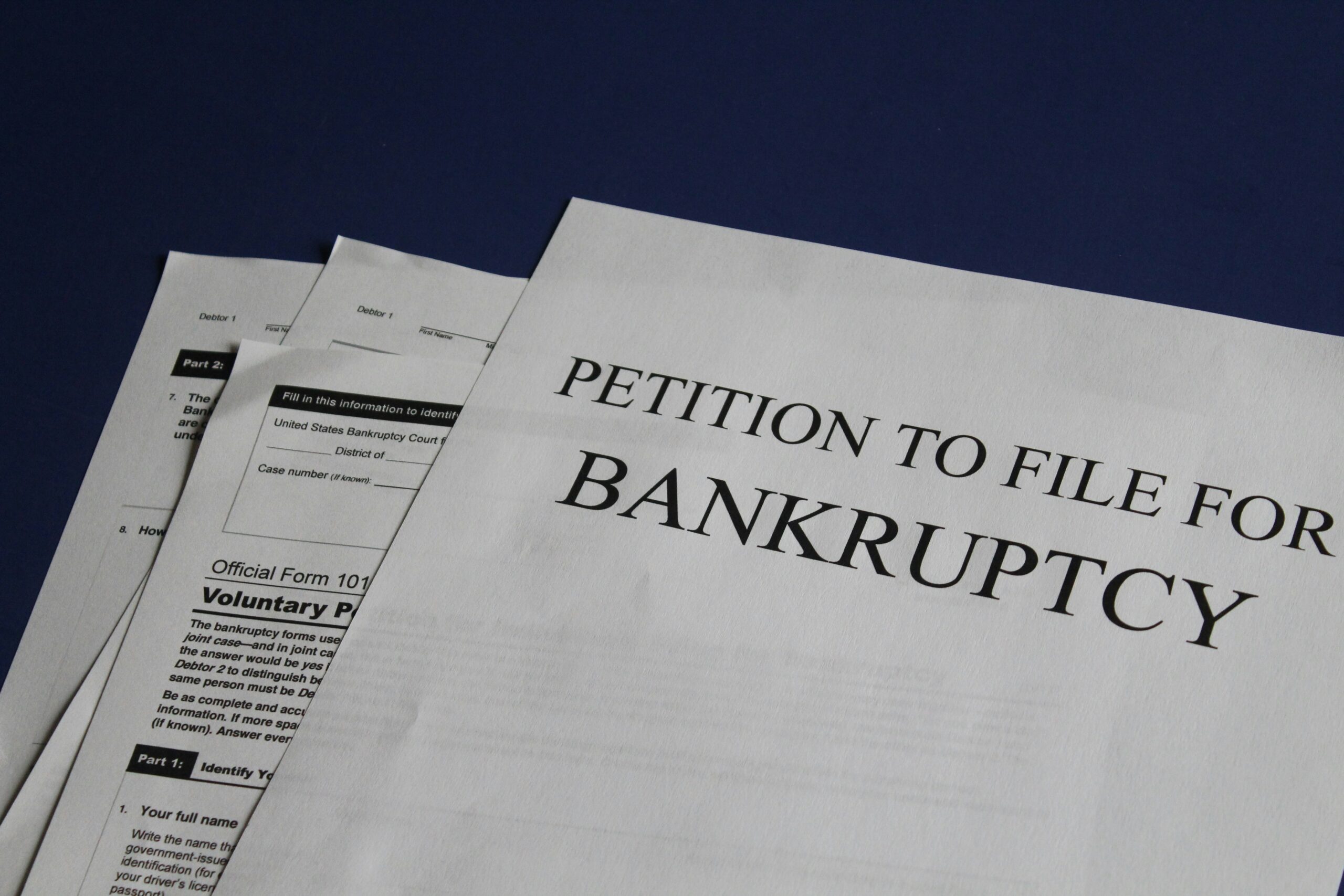Introduction to Bankruptcy
Bankruptcy is a legal mechanism designed to assist individuals and businesses struggling with unmanageable debt. It provides a structured process for addressing insolvency, offering a route to either discharge or reorganize debts under the oversight of a bankruptcy court. By declaring bankruptcy, debtors can gain temporary relief from creditors, halt collection activities, and potentially develop a plan to repay or eliminate their debts.
There are various scenarios in which bankruptcy might be a viable option. For individuals, unforeseen circumstances such as severe medical conditions, loss of employment, or significant life changes can precipitate financial turmoil. Businesses, on the other hand, may face insolvency due to market fluctuations, poor financial management, or unexpected economic downturns. In both cases, filing for bankruptcy can provide a critical lifeline, enabling debtors to reset their financial standing and work towards recovery.
Despite its potential benefits, filing for bankruptcy is not a decision to be taken lightly. It carries significant implications, including potential damage to credit scores, the public disclosure of financial status, and the possibility of losing certain assets. Moreover, the bankruptcy process can be complex and requires careful consideration and expert legal guidance. Understanding the types of bankruptcy available, the procedural steps involved, and the legal ramifications is essential for anyone contemplating this course of action.
This blog aims to demystify the concept of bankruptcy by breaking down its various aspects. From exploring different types of bankruptcy filings to detailing the processes and legal guidance required, each section will provide comprehensive insights to help readers make informed decisions. By gaining a thorough understanding of bankruptcy, individuals and businesses can better navigate their financial challenges and pursue a path toward stability and recovery.
Chapter 7 Bankruptcy: Liquidation
Chapter 7 bankruptcy, commonly known as ‘liquidation’ bankruptcy, serves as a mechanism for debtors to achieve relief from overwhelming debts through the liquidation of non-exempt assets. Eligibility for Chapter 7 bankruptcy is determined by the means test, which assesses the debtor’s income relative to the median income for a household of similar size in their state. If the debtor’s income is below the median, they typically qualify for Chapter 7. However, if it is above the median, further calculations are required to ascertain eligibility.
The process begins with the debtor filing a petition with the bankruptcy court, along with schedules of assets and liabilities, current income and expenditures, and a statement of financial affairs. Upon filing, an automatic stay is enacted, halting most collection actions against the debtor. A bankruptcy trustee is then appointed to oversee the case. The trustee’s primary role is to liquidate the debtor’s non-exempt assets. These assets are sold, and the proceeds are distributed to creditors in accordance with the priorities established by the Bankruptcy Code.
Not all debts are dischargeable under Chapter 7 bankruptcy. Debts that can be eliminated include credit card debt, medical bills, and personal loans. However, certain obligations, such as child support, alimony, most student loans, and certain tax debts, remain unaffected by the discharge. Secured debts, like mortgages or car loans, may also pose challenges, as creditors can seek to repossess collateral unless the debtor reaffirms the debt or redeems the property.
The implications for the debtor can be significant. While Chapter 7 offers a fresh financial start by discharging eligible debts, it also necessitates the surrender of non-exempt assets. Furthermore, the bankruptcy filing remains on the debtor’s credit report for up to ten years, potentially affecting their ability to obtain credit, housing, or employment in the future.
Chapter 11 Bankruptcy: Reorganization
Chapter 11 bankruptcy is a legal tool predominantly utilized by businesses seeking to restructure their financial obligations while continuing operations. This form of bankruptcy provides a framework for companies to reorganize their debts, assets, and business affairs under the oversight of the bankruptcy court. Unlike Chapter 7 bankruptcy, which involves liquidating assets to pay off creditors, Chapter 11 focuses on enabling the debtor to maintain business continuity and work towards a viable future.
The process of filing for Chapter 11 bankruptcy begins with the debtor, typically a corporation or partnership, filing a petition with the bankruptcy court. This petition includes detailed information about the debtor’s financial status, including assets, liabilities, income, and expenses. Once the petition is filed, an automatic stay goes into effect, halting all collection actions by creditors, thus providing the debtor with temporary relief from financial pressures.
Following the petition, the debtor is required to create a reorganization plan. This plan outlines how the debtor intends to restructure its operations, manage debts, and improve profitability. The reorganization plan must be comprehensive, detailing how different classes of creditors will be treated and how the business intends to return to solvency. Creditors are given the opportunity to vote on the plan, and it must be confirmed by the court to become effective. The court’s confirmation signifies that the plan is feasible, proposed in good faith, and in the best interest of creditors.
In the Chapter 11 reorganization process, the roles of the debtor and creditors are pivotal. The debtor, often referred to as the “debtor-in-possession,” retains control over the business operations and assets while working towards financial recovery. Creditors, on the other hand, form committees to represent their interests and negotiate the terms of the reorganization plan. These committees play a crucial role in ensuring that the reorganization plan is fair and equitable.
Chapter 11 bankruptcy differs significantly from Chapter 7 in its approach and objectives. While Chapter 7 involves liquidating assets to pay off creditors and ceasing operations, Chapter 11 aims to rehabilitate the business, allowing it to emerge financially stronger and more stable. This reorganization process can be complex and lengthy, but it offers businesses a chance to restructure their debts and continue contributing to the economy.
Chapter 13 Bankruptcy: Wage Earner’s Plan
Chapter 13 bankruptcy, often referred to as the “Wage Earner’s Plan,” provides an avenue for individuals with a regular income to restructure their financial obligations. Unlike Chapter 7 bankruptcy, which involves liquidating assets to discharge debts, Chapter 13 focuses on enabling debtors to keep their property while repaying creditors over time. This type of bankruptcy is particularly beneficial for individuals seeking to avoid foreclosure on their homes.
Eligibility for Chapter 13 bankruptcy requires the debtor to have a steady income. Additionally, the debtor must have unsecured debts less than $419,275 and secured debts under $1,257,850. These figures are adjusted periodically to reflect changes in the consumer price index. Debtors must also undergo credit counseling from an approved agency within 180 days before filing the bankruptcy petition.
The Chapter 13 process begins with the debtor filing a petition with the bankruptcy court, along with a proposed repayment plan. This plan outlines how the debtor will repay creditors over a period of three to five years. The length of the repayment plan depends on the debtor’s income relative to the state median; those earning above the median must propose a five-year plan, while those earning below may opt for a three-year plan. The court must approve the plan, and creditors have the opportunity to voice objections during a confirmation hearing.
Once the plan is confirmed, the debtor makes regular payments to a court-appointed trustee, who then distributes the funds to creditors. This structured repayment plan allows debtors to catch up on missed mortgage payments, thereby avoiding foreclosure. It also provides a framework for repaying secured debts, such as car loans, and addressing unsecured debts, like credit card balances, albeit typically at a reduced rate.
Chapter 13 bankruptcy offers a viable solution for individuals seeking to regain financial stability without losing their homes or other significant assets. By adhering to the court-approved repayment plan, debtors can eventually discharge remaining eligible debts, paving the way for a fresh financial start.
Comparing and Contrasting Bankruptcy Types
When considering bankruptcy, it’s crucial to understand the distinctions between Chapter 7, Chapter 11, and Chapter 13 bankruptcies, as each type serves different purposes and has unique eligibility criteria, processes, and outcomes. By comparing and contrasting these types, individuals and businesses can better determine which option aligns with their circumstances.
Chapter 7 Bankruptcy, often known as liquidation bankruptcy, is typically pursued by individuals with limited income and substantial unsecured debt. The process involves the liquidation of non-exempt assets by a bankruptcy trustee to pay off creditors. The eligibility for Chapter 7 is determined through a means test, which assesses whether the debtor’s income is low enough to qualify. The primary advantage of Chapter 7 is the relatively quick discharge of debts, usually within a few months, although it may result in the loss of some assets.
Chapter 11 Bankruptcy is commonly utilized by businesses seeking to reorganize their debts while continuing operations. Unlike Chapter 7, Chapter 11 allows the debtor to propose a reorganization plan to restructure debts and business operations. This type of bankruptcy is complex and often expensive, involving extensive documentation and court approval of the reorganization plan. Chapter 11 is advantageous for businesses aiming to regain profitability without liquidating assets, but the process can be lengthy and requires ongoing reporting and compliance.
Chapter 13 Bankruptcy is also known as a wage earner’s plan and is designed for individuals with a regular income who wish to repay their debts over time. Unlike Chapter 7, Chapter 13 does not involve the liquidation of assets. Instead, debtors propose a repayment plan, usually spanning three to five years, which must be approved by the court. The eligibility for Chapter 13 includes specific debt limits and the ability to make regular payments. The benefits of Chapter 13 include retaining assets and catching up on missed payments, but it requires a long-term commitment to a structured repayment schedule.
The choice between Chapter 7, Chapter 11, and Chapter 13 bankruptcy depends on various factors, including the debtor’s financial situation, type of debts, and long-term goals. Understanding these differences is essential for making an informed decision and seeking appropriate legal guidance tailored to individual needs.
Bankruptcy for Individuals vs. Businesses
Bankruptcy, while a critical legal recourse for both individuals and businesses facing insurmountable debt, manifests differently across these two categories. The objectives, procedures, and consequences significantly diverge depending on whether the debtor is an individual consumer or a business entity. Understanding these distinctions is essential for navigating the bankruptcy landscape effectively.
For individuals, the primary goal of bankruptcy is to provide a fresh start by discharging debts. Individual bankruptcy typically falls under Chapter 7 or Chapter 13 of the U.S. Bankruptcy Code. Chapter 7, known as liquidation bankruptcy, involves selling the individual’s non-exempt assets to pay off creditors. Chapter 13, or reorganization bankruptcy, allows individuals to create a repayment plan to pay back debts over three to five years while keeping their assets. The impact on an individual’s credit score can be profound and long-lasting, but the ultimate benefit is the potential for a clean financial slate.
In contrast, businesses facing bankruptcy have different objectives. The goal is often to reorganize and continue operations, rather than simply discharging debts. Business bankruptcies primarily proceed under Chapter 11, which allows for restructuring of debts and assets while maintaining business operations. This process can be complex and may involve negotiations with creditors, employees, and other stakeholders to create a feasible reorganization plan. Alternatively, a business might file under Chapter 7, leading to complete liquidation and cessation of operations.
The consequences of bankruptcy also differ markedly between individuals and businesses. For individuals, bankruptcy may lead to the loss of significant assets and a marked impact on creditworthiness, but it can also provide relief from overwhelming debt. For businesses, the process can result in restructured operations and continued existence or, in the case of liquidation, the end of the business entity. The implications for employees, creditors, and the broader market can be substantial, with rippling effects felt across the economic landscape.
Case studies further illustrate these differences. For instance, a well-known retailer filing for Chapter 11 may successfully emerge from bankruptcy by closing unprofitable stores and renegotiating leases, thereby continuing operations. Conversely, an individual filing for Chapter 7 might lose their home but emerge debt-free, ready to rebuild their financial life.
The Importance of Hiring an Experienced Bankruptcy Attorney
Navigating the complexities of the bankruptcy process can be an overwhelming endeavor. The role of an experienced bankruptcy attorney is crucial in ensuring a smooth and efficient journey through this legal maze. An attorney not only helps in understanding the intricate legal rights and obligations associated with bankruptcy but also provides invaluable assistance in preparing the necessary documentation required for filing.
One of the primary benefits of hiring a seasoned bankruptcy attorney is their expertise in interpreting the nuances of bankruptcy law. They can offer clear guidance on which type of bankruptcy—Chapter 7, Chapter 11, or Chapter 13—is most suitable for the debtor’s unique financial situation. This tailored advice can make a significant difference in protecting assets and minimizing liabilities.
Moreover, an experienced attorney will meticulously prepare and review all documentation to ensure accuracy and completeness. This step is vital as any errors or omissions can lead to delays, rejections, or even allegations of fraud. Proper documentation includes but is not limited to income statements, asset listings, debt details, and expenditure reports. The attorney’s attention to detail in this phase can streamline the process and avoid unnecessary complications.
Representation in court is another critical aspect where an experienced bankruptcy attorney proves indispensable. They advocate on behalf of the debtor, ensuring that their interests are adequately represented during hearings and negotiations with creditors. This professional representation can mitigate the stress and emotional burden often associated with court proceedings, providing the debtor with peace of mind.
When selecting a qualified bankruptcy attorney, it is essential to consider factors such as their experience in bankruptcy law, reputation, and client testimonials. Potential clients should look for attorneys who specialize in bankruptcy cases and have a proven track record of successful outcomes. Additionally, personal rapport and clear communication are key, as the process requires close cooperation and transparency between the attorney and the debtor.
In essence, the guidance of an experienced bankruptcy attorney can transform a daunting process into a manageable one, ensuring that the debtor navigates their financial challenges with confidence and legal security.
Conclusion and Final Thoughts
In navigating the complex landscape of bankruptcy, it is crucial to have a comprehensive understanding of the different types available and how they apply to both individuals and businesses. The distinctions between Chapter 7, Chapter 11, and Chapter 13 bankruptcies are significant, with each offering unique pathways to financial relief and recovery. For individuals, the choice often hinges on their income levels, assets, and the nature of their debts. Businesses, on the other hand, must carefully consider their long-term viability and restructuring needs when opting for Chapter 11 or other relevant options.
Equally important is the recognition that bankruptcy is not a one-size-fits-all solution. The intricate legal procedures, stringent documentation requirements, and potential long-term financial implications necessitate informed decision-making. Here, the role of professional legal guidance cannot be overstated. An experienced bankruptcy attorney can provide invaluable insights into the most suitable type of bankruptcy for your specific circumstances and help navigate the procedural nuances effectively. Their expertise ensures compliance with legal mandates, maximizes the benefits of filing, and mitigates potential pitfalls along the way.
Ultimately, the goal of bankruptcy is to offer a fresh financial start, whether through liquidation of assets or reorganization of debts. By understanding your options and seeking appropriate legal counsel, you can make informed decisions that align with your financial goals and obligations. The path to financial recovery may be challenging, but with the right knowledge and support, it becomes a manageable and strategic process. As you consider your next steps, remember that thorough preparation and professional advice are key to successfully navigating the bankruptcy landscape.






